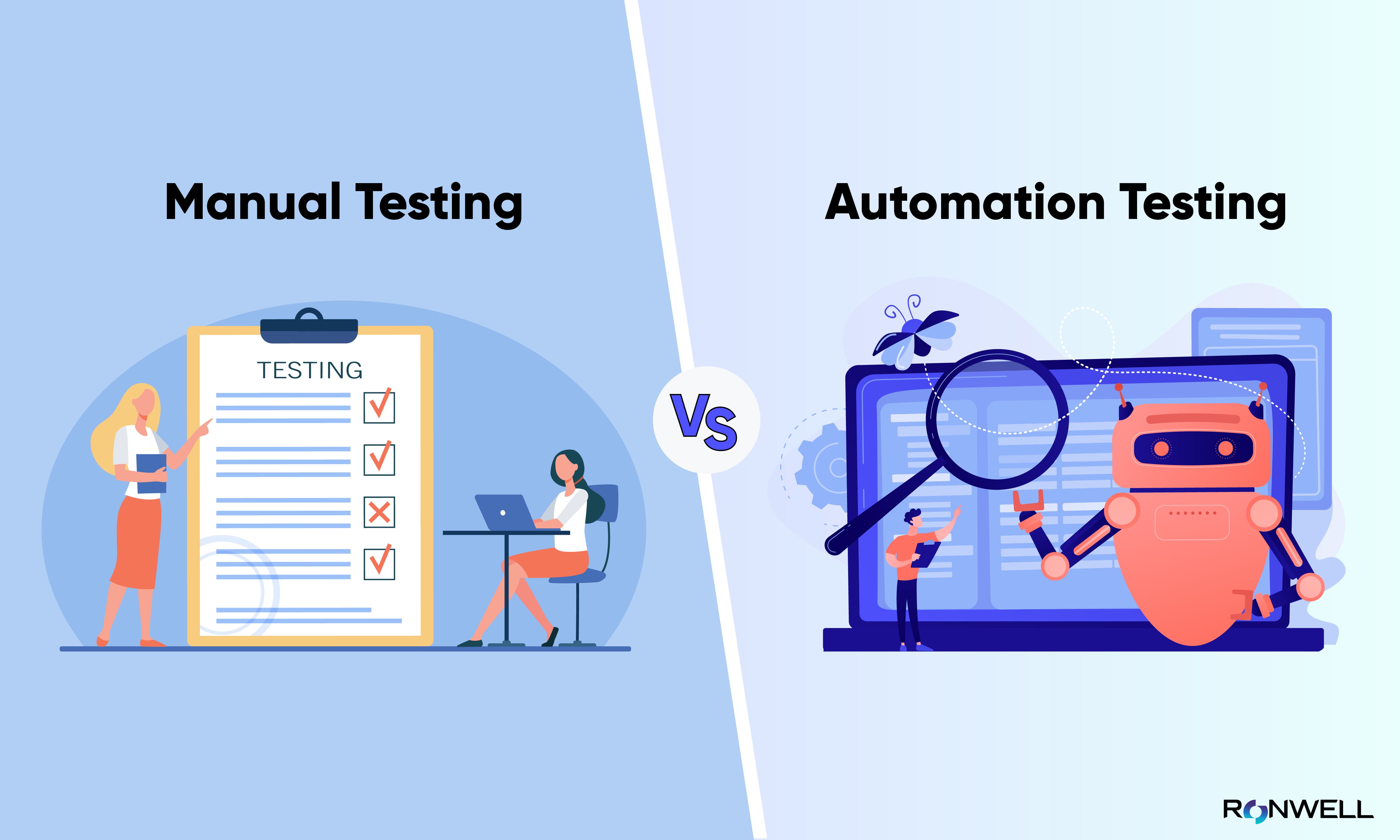The Best Guide to Implementing Automation Testing Successfully
The Best Guide to Implementing Automation Testing Successfully
Blog Article
From Handbook to Automated Testing: A Comprehensive Overview to Transitioning Smoothly and Effectively
In the world of software screening, the change from handbook to automated procedures has actually come to be a significantly vital change for organizations looking for to boost efficiency and accuracy in their testing practices. The trip from handbook to automated screening is not without its obstacles, but when approached purposefully and with a clear plan in mind, the benefits can be significant.
Benefits of Automated Examining
Automated testing provides numerous advantages, improving efficiency and accuracy in software growth processes. One primary advantage is the substantial decrease in screening time. Automated tests can be run simultaneously on numerous tools and running systems, considerably quickening the screening stage compared to manual testing. This boosted efficiency permits faster feedback on the top quality of the software application, making it possible for programmers to recognize and deal with concerns quickly.
Moreover, automated testing makes sure a greater level of accuracy in spotting flaws. Consistency in screening is likewise improved, as automated tests execute the same steps precisely each time they are run.
Picking the Right Devices

First of all, examine your needs and goals. Comprehend the scope of your task, the technologies involved, and the capability of your team. This evaluation will certainly aid you figure out the attributes and abilities you need in your testing devices.
Secondly, consider the compatibility of the tools with your existing procedures and systems. Smooth integration with your present software application advancement lifecycle is necessary to guarantee a smooth shift to automation.
Furthermore, examine the scalability and flexibility of the devices. As your testing requires develop, the tools must have the ability to adapt and fit modifications properly.
Last but not least, consider the assistance and area around the tools. Robust assistance and an active user neighborhood can offer beneficial resources and help when applying automated screening. By very carefully considering these aspects, you can pick the right devices that straighten with your needs and established the phase for an effective change to automated screening.
Composing Efficient Test Manuscripts

When crafting test manuscripts, it is essential to consider the certain requirements of the software being checked and make sure that the scripts resolve all important capabilities. Clear and descriptive calling conventions for test manuscripts and test situations can improve readability and maintainability. Furthermore, incorporating mistake handling mechanisms within the test scripts can aid in recognizing and resolving issues quickly.
In addition, organizing test scripts into modular components can boost reusability and scalability, lowering redundancy and improving efficiency in test script maintenance. Routine reviews and updates to evaluate scripts are essential to equal progressing software needs and capabilities. By following these concepts, testers can develop durable and efficient examination scripts that add substantially to the success of automated testing processes.
Integrating Automation Into Workflows
Efficient integration of automation tools into existing workflows streamlines processes and enhances productivity within software application development cycles. When incorporating automation into workflows, it is essential to identify repetitive tasks that can be automated to conserve time and minimize human error. By effortlessly integrating automated screening devices like Selenium or Appium right into the software application development lifecycle, groups can achieve faster comments on code changes, resulting in quicker pest discovery and resolution. This assimilation permits continuous screening throughout the growth procedure, guaranteeing that any type of issues are determined beforehand, leading to higher software program high quality. Furthermore, automation can be made use of to set off tests immediately after each code devote, supplying prompt validation and releasing up testers to concentrate on even more facility scenarios. Proper assimilation of automation devices requires partnership between development, testing, and procedures teams to establish a unified workflow that optimizes performance and effectiveness in supplying top notch software application items.
Ensuring a Smooth Transition
Efficiently transitioning to automated screening entails meticulous planning and careful implementation to optimize and reduce disturbances performance visit in the software application growth process - automation testing. To guarantee a smooth shift, it is necessary to begin by conducting a thorough assessment of the current testing procedures and identifying areas where automation can bring the most substantial benefits. Engaging with all stakeholders early on while doing so, including developers, testers, and project managers, is critical for amassing assistance and buy-in for the automation initiative
Communication is key during this transition phase. Clear interaction of the goals, advantages, and assumptions of automated screening aids to take care of any resistance or issues that may emerge. Furthermore, supplying appropriate training and sources for group participants to upskill in automation devices and techniques is vital for making certain an effective transition.

Final Thought
To conclude, transitioning from go to this website handbook to automated screening provides various advantages, including raised efficiency and dependability. By choosing the proper devices, composing effective test manuscripts, and incorporating automation seamlessly into workflows, organizations can make sure a smooth and successful transition. It is important to accept automation as a valuable property in software application screening procedures to enhance overall quality and productivity.
In the realm of software program testing, the shift from handbook to automated processes has become an increasingly vital shift for organizations seeking to boost effectiveness and precision in their screening methods. Automated tests can be run all at once on multiple tools and running systems, substantially speeding up the screening phase compared to hand-operated testing. Uniformity in testing is additionally enhanced, as automated examinations execute the same actions specifically each time they are run.To make certain the successful execution of selected screening tools, the development of effective test manuscripts plays a critical function in verifying the capability and performance of my website automated procedures - automation testing. By following these concepts, testers can develop robust and reliable examination scripts that add considerably to the success of automated screening processes
Report this page